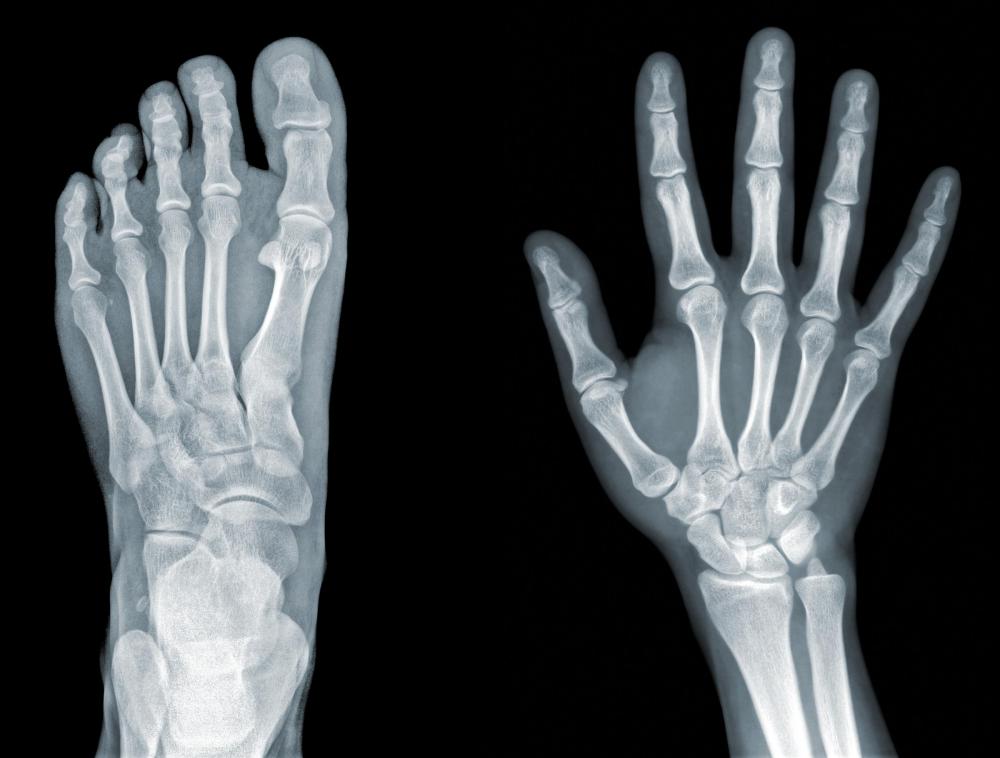At WiseGEEK, we're committed to delivering accurate, trustworthy information. Our expert-authored content is rigorously fact-checked and sourced from credible authorities. Discover how we uphold the highest standards in providing you with reliable knowledge.
What Is the Opponens Pollicis?
The opponens pollicis is a muscle of the thumb that contributes to the movement of opposition, or the act of bringing the thumb across the palm of the hand as in grasping an object or touching the thumb to the other fingers. Unlike many of the muscles and tendons in the hand that run lengthwise, this muscle crosses the lower palm side of the hand obliquely. Triangular in shape, the opponens pollicis is one of the thenar muscles, a group of three muscles that make up the fleshy area between the thumb and the wrist.
Along with the abductor pollicis brevis and flexor pollicis brevis muscles, the opponens pollicis originates from two sites on the hand: the trapezium bone and the flexor retinaculum. The trapezium is one of eight small bones of the carpus, the bones in the hand grouped together just beyond the wrist. Specifically, it is situated nearest the base of the thumb, joining with the metacarpal bone of the thumb at its lower end. The flexor retinaculum is a large, broad ligament that covers the palm side of the wrist perpendicularly, with the thenar muscles arising from its thumb side and another group of muscles arising from the pinky side. This ligament functions to hold many of the tendons and vessels of the hand in place as they cross the wrist from the forearm.

From the lateral aspect of the flexor retinaculum and the adjacent trapezium bone, the opponens pollicis extends into the thumb deep to the abductor pollicis brevis muscle. The abductor pollicis brevis is the most superficial and is found closest to the wrist along the near border of the underside of the thumb. The opponens pollicis runs immediately underneath it toward its lateral side. It then crosses distally, or away from the body, and laterally, or toward the thumb-side of the hand.

This muscle then inserts along the outer border of the first metacarpal, the bone at the base of the thumb that stretches between the carpus of the wrist and the proximal phalange of the thumb, which is the nearer of the two thumb bones. When it contracts, the shortening of the opponens pollicis pulls the entire thumb downward and inward toward the palm of the hand by flexing the joint between the metacarpal and the carpus. This causes the motion of curling the palm like a cup, one of several muscle actions that make the human thumb opposable.
AS FEATURED ON:
AS FEATURED ON:












Discuss this Article
Post your comments